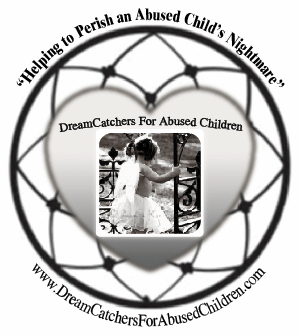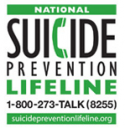Child Abuse Prevention Tactics
Best prevention means aligning resources, coordinating efforts
 Child abuse prevention resources must focus on evidence-based intervention strategies and aggregating sound data, but the buck doesn’t stop there. Enhancing safety and resilience for at-risk children crosses many disciplines, including medicine, public health, education, childcare, law enforcement, child protection and foster and adoptive families.
Child abuse prevention resources must focus on evidence-based intervention strategies and aggregating sound data, but the buck doesn’t stop there. Enhancing safety and resilience for at-risk children crosses many disciplines, including medicine, public health, education, childcare, law enforcement, child protection and foster and adoptive families.
The best prevention starts with aligning resources, coordinating efforts and engineering a safe and healthy environment to strengthen families and communities at risk. Vulnerable children require a deep investment, and police, hospitals, schools, foundations and social service agencies are only the first to help in the prevention of child abuse. Each of these organizations and coalitions gives vital support to children and families at risk, but the bottom line is: Invest in our children today, and we’ll all reap the benefits for years to come.
Editorial: Stiffen child abuse penalty (and) New ways to reduce child abuse
Abstract
Ninety-one child sex offenders were interviewed about the methods they used to target children, the age range of their victims, how they selected children and maintained them as victims, and what suggestions they had for preventing child sexual abuse. Offenders were selected from treatment programs, probation, special hospitals, and prisons. They were interviewed using a semi-structured questionnaire. Results indicate that offenders gained access to children through caretaking, such as babysitting; targeted children by using bribes, gifts and games; used force, anger, threats, and bribes to ensure their continuing compliance; and systematically desensitized children through touch, talk about sex, and persuasion. Nearly half the offenders had no bad feelings about sexually abusing children. The implications for prevention programs are discussed.
Abuse Prevention
WHAT IS ABUSE AND NEGLECT?
According to the Missouri Legislature the following definitions apply to abuse and neglect:
ABUSE:
Any physical injury, sexual abuse, or emotional abuse inflicted on a child other than by accidental means by those responsible for the child’s care, custody, and control; except that discipline including spanking, administered in a reasonable manner, shall not be construed to be abuse.
NEGLECT:
The failure to provide the child the proper or necessary support, education as required by law, nutrition, medical, surgical, or care necessary for the child’s well-being by those responsible for their care, custody, and control. Those responsible for the care, custody, and control of the child include, but are not limited to, the parents or guardian of the child, other members of the child’s household, or those exercising supervision over a child for any part of a twenty-four hour day. Those responsible for the care, custody, and control shall also include any adult who, based on their relationship to the parents of the child of the child, members of the child’s household or family, has access to the child.
Source: 16th Circuit Court of Jackson County, MO.
RECOGNIZING CHILD ABUSE
The first step in helping abused or neglected children is learning to recognize the signs of child abuse and neglect. The presence of a single sign does not prove child abuse is occurring in a family, but a closer look at the situation may be warranted when these signs appear repeatedly or in combination.
The following signs may signal the presence of child abuse or neglect.
The Child:
- Shows sudden changes in behavior or school performance
- Has not received help for physical or medical problems brought to the parents’ attention
- Has learning problems (or difficulty concentrating) that cannot be attributed to specific physical or psychological causes
- Is always watchful, as though preparing for something bad to happen
- Lacks adult supervision
- Is overly compliant, passive, or withdrawn
- Comes to school or other activities early, stays late, and does not want to go home
The Parent:
- Shows little concern for the child
- Denies the existence of—or blames the child for—the child’s problems in school or at home
- Asks teachers or other caregivers to use harsh physical discipline if the child misbehaves
- Sees the child as entirely bad, worthless, or burdensome
- Demands a level of physical or academic performance the child cannot achieve
- Looks primarily to the child for care, attention, and satisfaction of emotional needs
The Parent and Child:
- Rarely touch or look at each other
- Consider their relationship entirely negative
- State that they do not like each other
Source: Child Welfare Information Gateway
Parental Resilience: Protective & Promotive Factors
Numerous researchers have concluded that how parents respond to stressors is much more important than the stressor itself in determining the outcomes for themselves and their children. Parents are more likely to achieve healthy, favorable outcomes if they are resilient. Resilience is the process of managing stress and functioning well even when faced with challenges, adversity and trauma. Some stressors parents face can be managed easily so that problems get resolved; for example, calling a relative or friend to pick-up a child from school when a parent is delayed. But some stressors cannot be easily resolved. For example, parents cannot “fix” their child’s developmental disability, erase the abuse they suffered as a child or be able to move out of a crime-plagued neighborhood. Rather, parents are resilient when they are able to call forth their inner strength to proactively meet personal challenges and those in relation to their child, manage adversities, heal the effects of trauma and thrive given the unique characteristics and circumstances of their family. READ MORE HERE
---------------------------------------------By the time you finish reading this, 15 children will have been abused; In the next five minutes, 30 more; Within the next hour, 360 more; And by tonight, close to 8,000+ children will have suffered from abuse, 5 of which will die. Child abuse has increased 134% since 1980 and is now considered a worldwide epidemic. The high jump in child abuse deaths and the shocking increase in statistics highlights the frightening lack of public knowledge.
Educate Yourself -- Learn the Facts
It May Just Save a Child's Life!!


















![Validate my RSS feed [Valid RSS]](http://dreamcatchersforabusedchildren.com/wp-content/uploads/2009/10/valid-rss.png)












